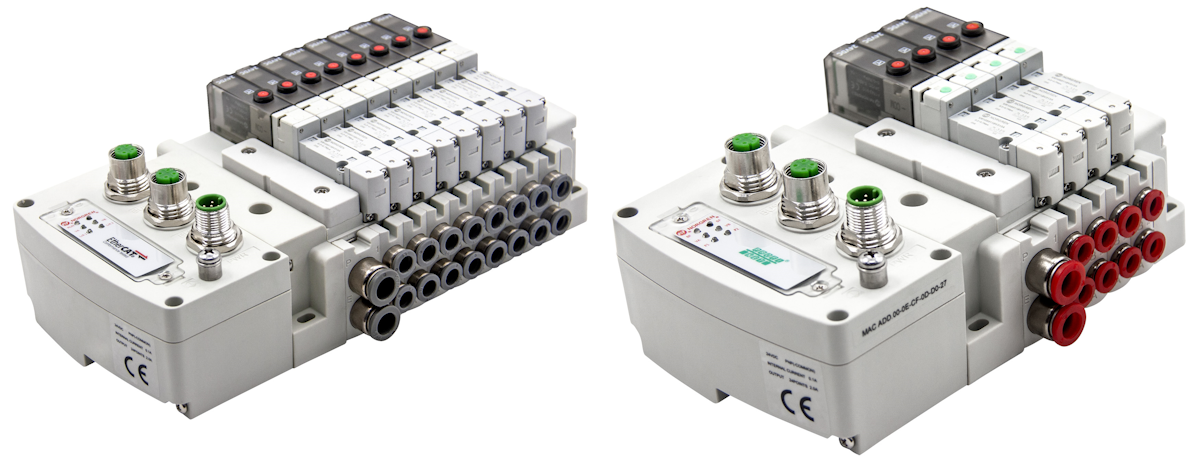Partner content with Automation24.

Valve manifolds have traditionally been considered complex — but not anymore. Norgren is touting its new VR series valve manifolds as more accessible, easier to use, and faster to assemble and deploy.
Fluid Power World sat down with Bradlee Dittmer, Norgren’s Valve Product Technical Manager, to learn more.

Bradlee Dittmer, Valve Product Technical Manager, Norgren.
Why did Norgren create the VR series valve manifolds?
Customers want to consolidate direct ported directional control valves into a simple manifold for easier pneumatic and electrical connections. Our customers had increasingly asked for the smaller sizes often used in piloting applications or smaller actuators, so we developed our user-friendly VR solution.
If you have 8 to 10 direct ported valves in close proximity, replacing a valve can be time-consuming because you need to disconnect all the pneumatic and electrical connections. With a sub-based product like ours, all the pneumatics are incorporated into the manifold, so replacing a valve takes seconds instead of minutes. This speeds up both maintenance and installation since everything comes pre-populated with the necessary fittings and valves.
What differentiates the VR series valve manifolds from other products?
We offer different bases with interchangeable fittings, such as 5/32, 1/4” or 5/16”, and you can intermix them within the manifold. This allows for greater flexibility and the ability to consolidate what might have required two manifolds into one — so you have the ability to customize the manifold for your exact application. The modular design allows you to place valve functions in any station within the manifold.
The manifold itself is designed for single-step additions, ranging from 2 to 24 stations depending on the number of solenoids. Customers can easily expand or reduce stations and use a blanking plate for unused ones. Manifolds are available with Ethernet/IP, PROFINET, EtherCAT, IO-Link and a basic multipole, so the VR10 and 15 are ready for your next application.

Norgren’s VR10 Ethernet (left) and VR10 PROFINET, Valve manifolds. (Image: Norgren.)
One thing that’s unique to us is our quick-build program with Automation24, which features our predetermined manifold with all blanking plates that has been pre-tested both pneumatically and electrically. The customer can order the manifold and the valves separately, and then easily install the valves anywhere on the manifold using just two screws, allowing for an onsite solution in days, not weeks.
The VR series comes in 10mm and 15mm valve widths, with the choice depending on whether customers require a smaller footprint or higher air flow. The low watt solenoid coil (0.45W) is environmentally friendly. We get a very good cycle life—up to 30 million cycles, depending on the application. All our valves come standard with LEDs that light up when energized, so you can easily see which valves are actuating.
As for safety, the design engineer could take advantage of valve functions like a 5/3 cylinder open-to-exhaust feature that prevents trapped pneumatic air by ensuring that the valves can vent air when they come to rest in their de-energized state, or a 5/2 solenoid/spring return ensuring the proper rest position when the valve is de-energized, so that the valve’s position is known when power is lost.
What are some key industries that would benefit from the VR series, and for what types of applications?
The VR10 and 15 are ideal for factory automation, including sectors like packaging, food and beverage, and material handling. They support piloting fluid control valves in car wash applications, food processing, conveying systems, and anywhere using linear cylinders or pneumatic actuators—especially in smaller configurations like 1-to-3-inch bores and 1-to-12-inch strokes. The applications are endless; a lot of it depends on the unique design challenges, from simple solutions to complex systems.
For more information, please visit automation24.com.
Filed Under: Sponsored Content